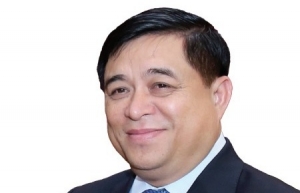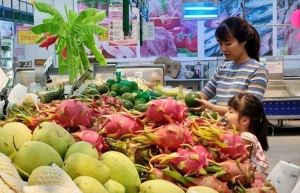Inflation putting pressure on myriad of sectors
The General Statistics Office (GSO) last week reported that the consumer price index (CPI) in the first 11 months of this year rose 3.22 per cent on-year, still far below the National Assembly’s target of about 4 per cent.
In November, the CPI climbed only 0.25 per cent on-month and 3.45 per cent on-year.
Strong increases in prices of medical services following requirements from the Ministry of Health, and of school fees following a 2021 circular on school fee management of the government have been cited as among the key drivers of CPI in November.
 |
| Inflation putting pressure on myriad of sectors, illustration photo/ Source: freepik.com |
Specifically, the price of medicine and healthcare services hit the highest on-month increase, at 2.9 per cent – creating a 0.16 per cent rise in CPI. In which, the price of outpatient treatment services went up by 2.27 per cent, and that of inpatient treatment services rose 5.13 per cent.
“The main reason is that many localities have applied new medical service prices as required by a November circular on stipulating united prices for medical examination services, health insurance treatment among hospitals of the same level nationwide and instructions on applying prices and payment of medical examination and treatment costs in some cases,” said the GSO.
Such price hike has affected thousands of patients like Do Duc Minh, who now has to pay an additional $85 a month for treatment at Hanoi Kidney Hospital, double the previous figure.
“I have no stable income, and all costs for my treatment are borne by my two sons, who are factory workers with meagre incomes,” Minh said. “The additional payment is said to be ascribed to a hike in services at the hospital. Here, hundreds of outpatients like me are being treated.”
At South Thang Long Hospital, also in the capital of Hanoi, many other patients like Nguyen Van Anh are also suffering from a rise in treatment bills.
“I have to pay another $21 for my heart disease treatment and so do other patients around me. They are mostly poor people,” Van Anh said.
According to the GSO, in November, the price of the educational group increased 0.38 per cent on-month, in which that of educational services climbed 0.42 per cent as many localities have increased fees for nurseries, and primary, secondary, and high schools, as well as many state-owned and privately run colleges and universities.
The on-month price of notebooks increased 0.04 per cent in November as compared to October, while the prices of pens and stationery ascended 0.1 and 0.17 per cent, respectively, in the month.
A big rise in domestic consumption has also contributed to an expansion in November CPI. The GSO reported that in the month, total goods retail and consumption service revenue is estimated to be $23.3 billion, up 1.4 per cent on-month and 10.1 per cent on-year
This is because of the demand for food and foodstuffs; cultural and educational items; and accommodation, catering, and travel services continues to maintain an increasing trend compared to the same period last year, the GSO said.
In the first 11 months of this year, the figure is estimated to stand at $239.1 billion, which is up 9.6 per cent on-year.
Two months ago, the Asian Development Bank forecast that Vietnam’s inflation may be 3.8 per cent this year and 4 per cent next year.
“Inflationary pressure in the near term may come from the disruption of global supply chains due to the continued Russian invasion of Ukraine. However, this pressure could be contained by subdued gas and petroleum prices in the year’s second half and stable domestic food prices,” the bank stated.
Global analysts Trading Economics last week predicted that the inflation rate in Vietnam is expected to be 3.8 per cent by the end of this quarter. In the long term, the rate is projected to trend around 4 per cent in 2024 and 4.4 per cent in 2025.
According to the World Bank, Vietnam’s CPI is expected to rise slightly from an average 3.1 per cent in 2022 to an average 3.5 per cent in 2023. The CPI will moderate to 3 per cent in 2024 and 2025 based on the expectation of stable commodity and energy prices in 2024.
 | Uncertainty must be taken into account in promoting growth The global economy has seen some positive signs despite numerous risks and challenges that include inflation, financial and monetary instability, high public debt in developing countries, impacts from the Russia-Ukraine conflict, and instability in energy and food markets, among other areas. |
 | Vietnam should keep close watch on inflation rate: World Bank Vietnam should closely monitor inflation which has been on the rise in recent time, according to the World Bank (WB). |
What the stars mean:
★ Poor ★ ★ Promising ★★★ Good ★★★★ Very good ★★★★★ Exceptional
Related Contents
Latest News
More News
- Protect what’s next: towards a future free from meningococcal group B disease (December 05, 2025 | 18:00)
- New ILO report offers policy recommendations for disability inclusion (December 04, 2025 | 15:18)
- Maternal job loss may affect children’s mental health, research shows (December 03, 2025 | 19:11)
- Women lead Vietnam’s shift to climate-resilient agriculture (December 03, 2025 | 19:10)
- Experts highlight unpaid care work as key barrier to gender equality (December 03, 2025 | 15:15)
- Opportunities and inequalities for women workers in Vietnam's garment industry (December 03, 2025 | 09:00)
- Vietjet flights carry love to devastated central region (November 28, 2025 | 11:35)
- New initiative to boost the fight against domestic violence (November 26, 2025 | 10:00)
- South Korea funds IOM relief for Vietnam’s typhoon-affected communities (November 24, 2025 | 15:33)
- AI and human-centred values set to shape the future of HR in Vietnam (November 21, 2025 | 18:04)

 Tag:
Tag:





















 Mobile Version
Mobile Version